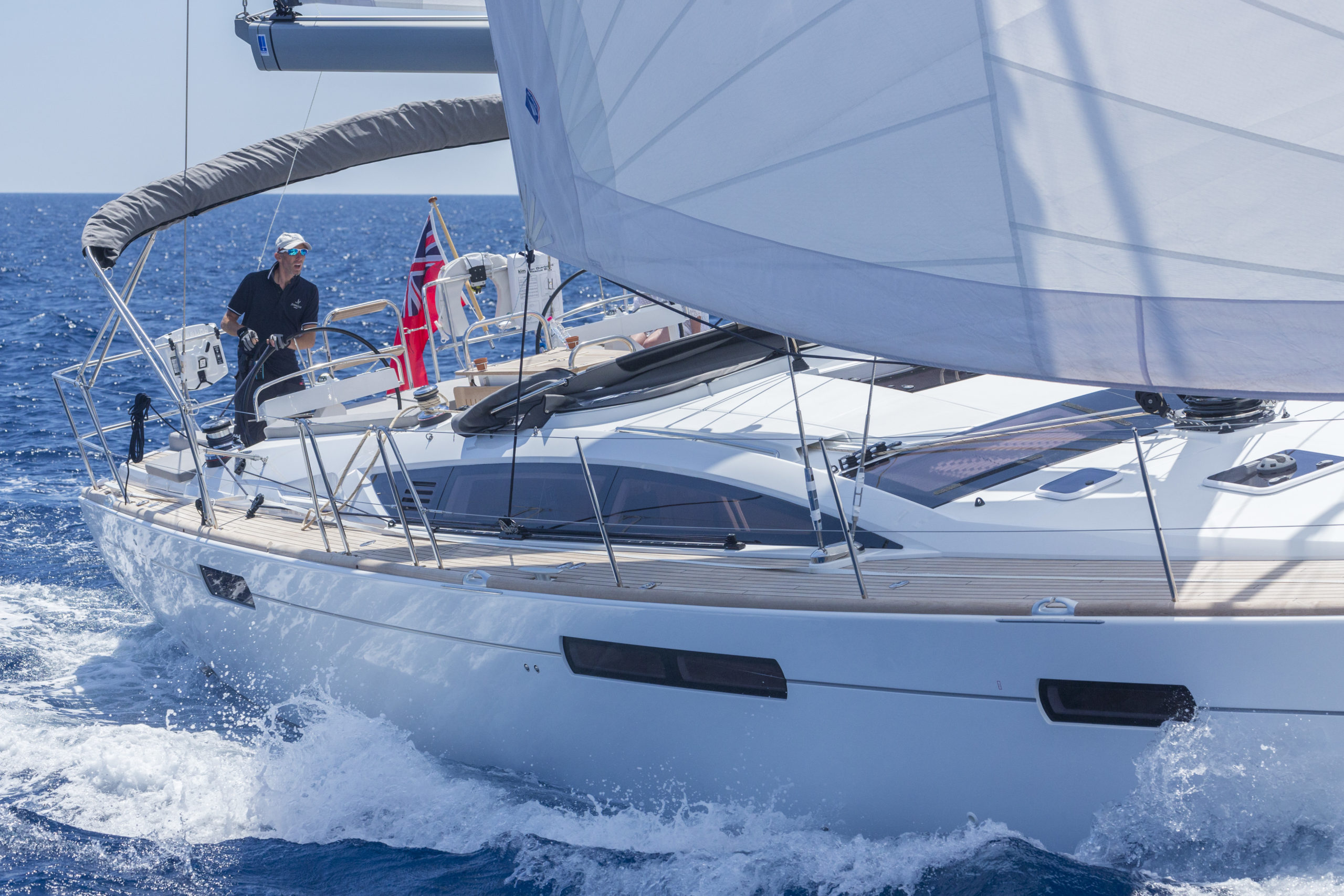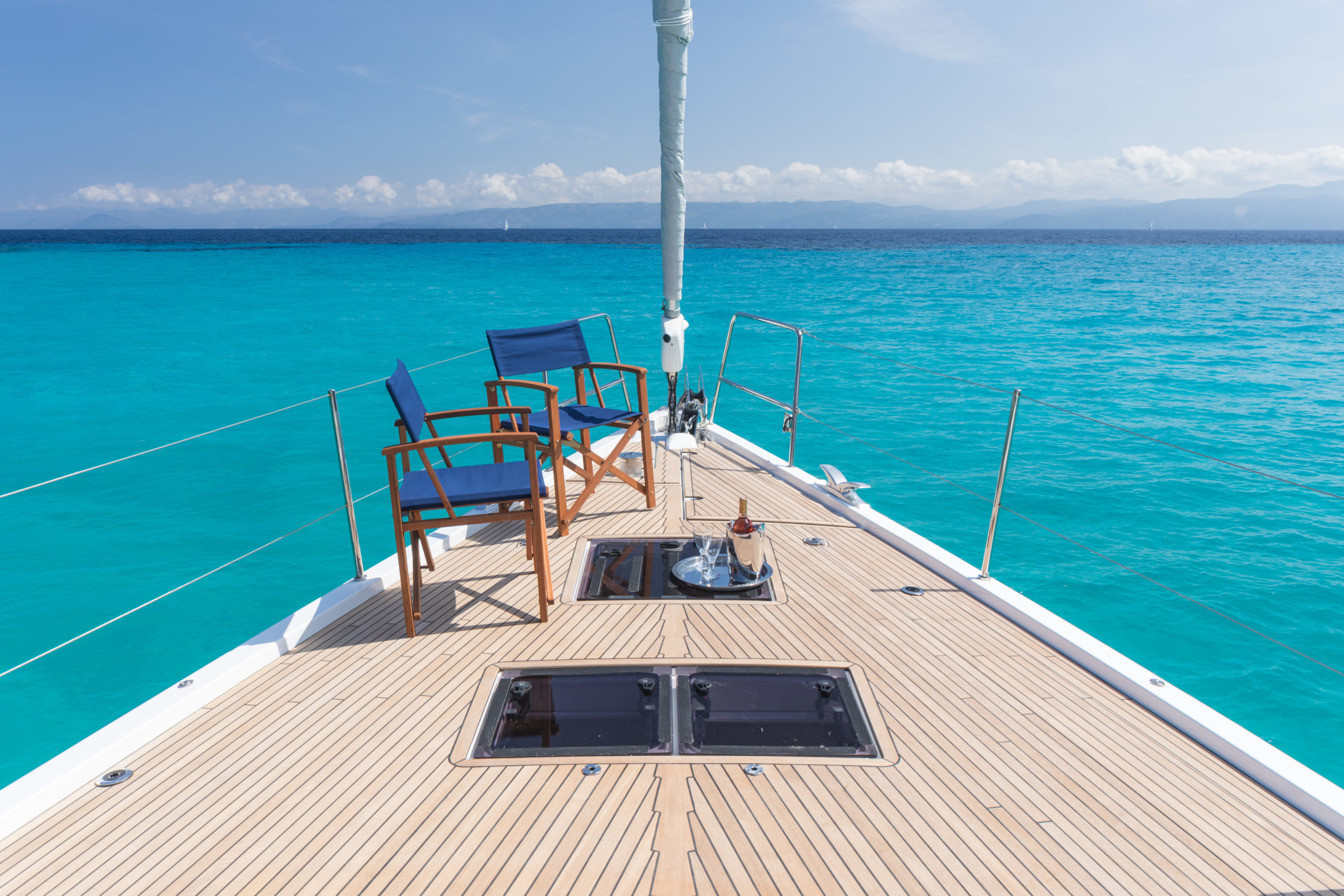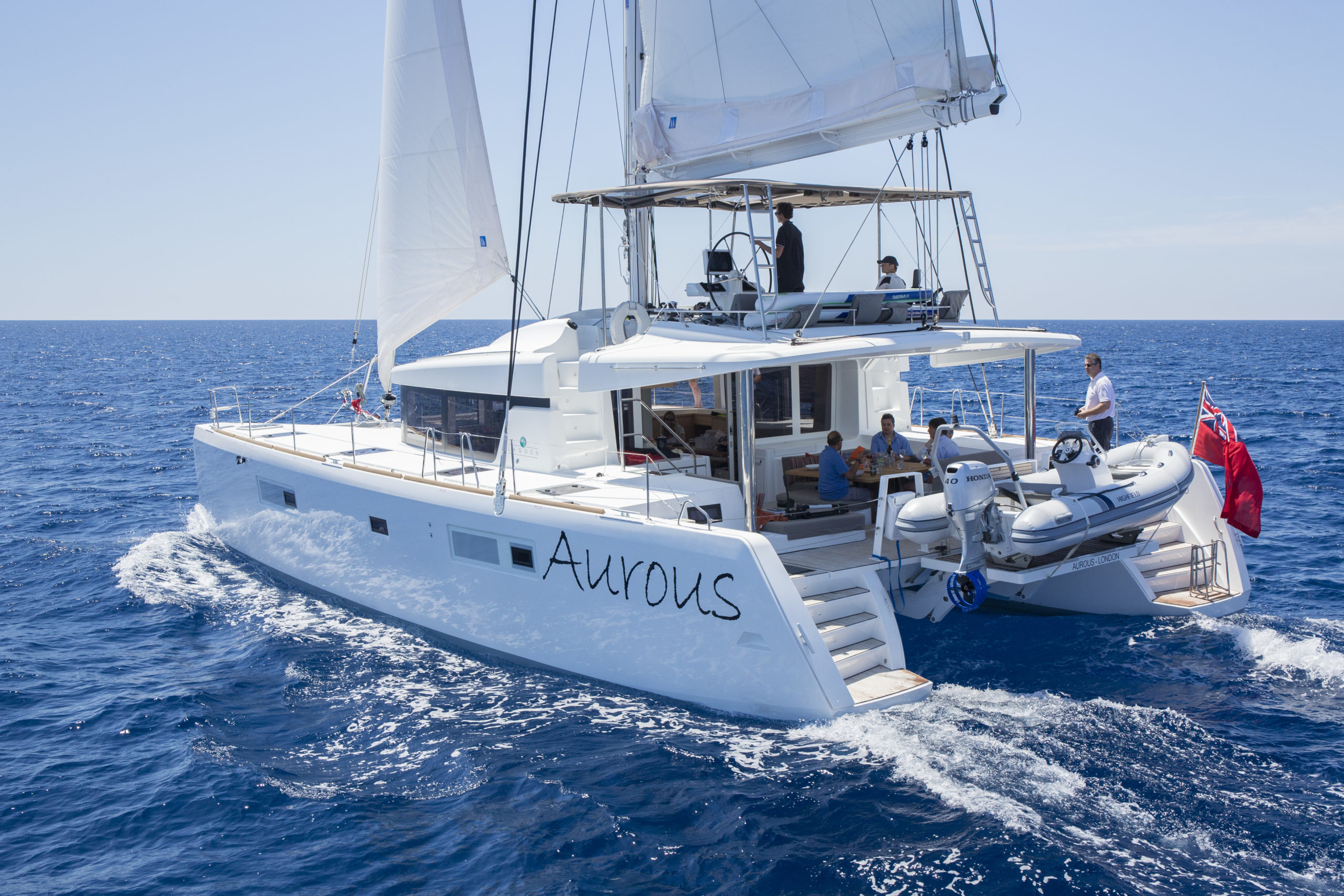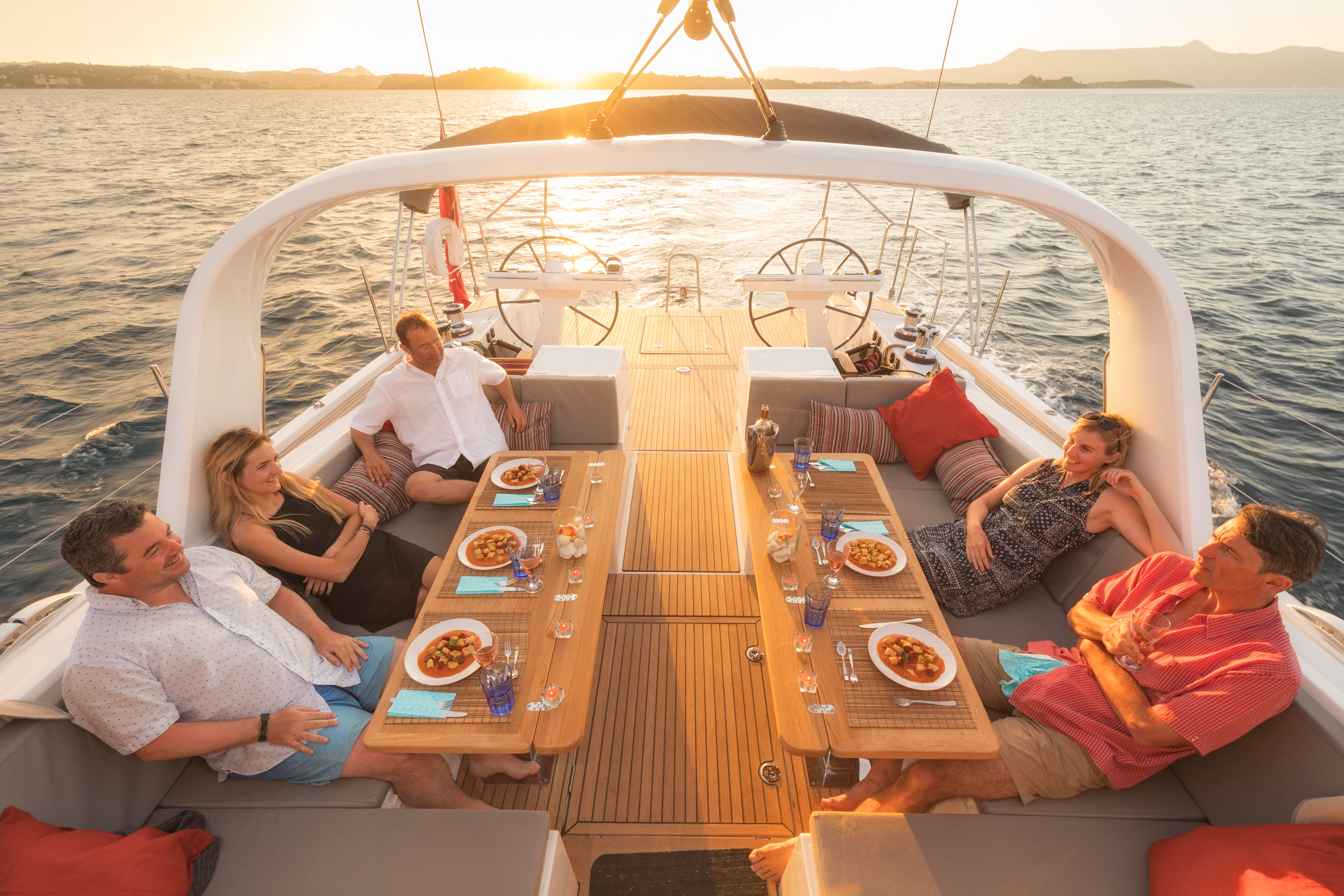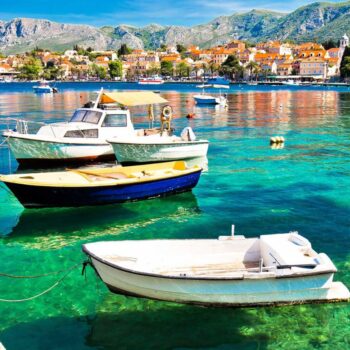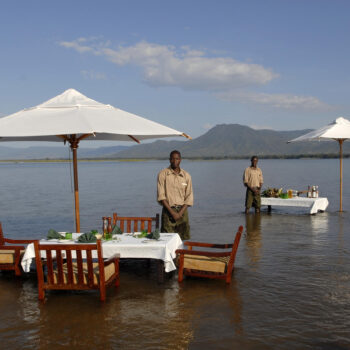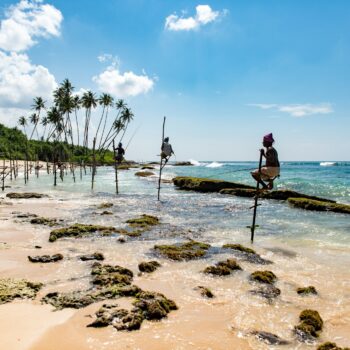A week on board a sailing yacht cruising between the Greek Islands may sound like something you need to have practiced dong for many months beforehand, but rest assured: absolutely no experience is required. Whether you’ve never set foot on a yacht before – or you’re a seasoned seafarer – there truly is something for everyone on board.
Going sailing is something that anyone can enjoy. Modern yachts are as easy to live on as a villa. Here, I hope to answer some of your questions and as ever, please don’t hesitate to get in touch with us at sailing@fleewinter.com or by calling 0207 112 0019.
Do I need to have any experience?
Not at all! Each of our yachts comes with a professional crew of two who are capable of managing the yacht between them. If you fancy getting involved, then they’d be thrilled to teach you a few things – but knowledge is by no means a pre-requisite! If you would like to know more before you arrive however, YouTube is a brilliant place to see the basics in action.
When should I go sailing?
If avoiding the crowds is your thing, then go in the shoulder seasons. May, June and late September are beautiful, and also somewhat quieter and cooler than the summer months. The breeze might not be as strong for sailing at times but the rewards of peaceful islands is worth the calmer winds.
If you’re interested in really giving sailing a go, then visiting in the summer months when the wind has set in is going to be the ideal time for you. From around mid-June, the ‘prevailing winds’ for the area are set in due to the hotter weather, resulting in a predictable afternoon breeze perfect for sailing. Each month has its own charm and the Greek islands are stunning throughout the season.
I’m nervous about trying sailing, should I still go?
Yes, absolutely you should still go!
Typically people are most nervous about the ‘tipping’ movement you see happening on monohull – single hulled – yachts. That is called ‘heeling’ and is a direct result of the sails catching the wind and the ‘keel’ – the huge counterbalance weight under the water – correcting the tip. If a yacht isn’t heeling, it won’t sail well: and if it is heeling too much, it’s equally inefficient, so we always look for that ‘sweet spot’ where the yacht sails beautifully, and everyone on board is comfortable. There’s a famous phrase – “you can’t control the wind, but you can adjust the sails.” This is exactly true. If it gets a little windier, it’s very quick and easy to make the sails smaller, so there is less for the wind to hit: and everything stays nice and flat.
Whilst it may look like it moves around a lot, it is important to remember that each yacht weighs upwards of 35 tonnes. That’s more than 3 London busses. It’ll take a LOT of wind for anything bad to happen – and if there IS that much wind, we definitely won’t be out in it! Our yachts are also designed to take a lot more stress than we put them through, much like your cars. They are big, strong vessels that are exceptionally comfortable in 99% of the conditions we experience, and completely safe in the rare 1% and, again. If the weather is bad, we don’t go sailing. There’s no point doing something scary on what is meant to be the holiday of a lifetime!
If the thought really still puts you off, try a catamaran – Aurous is not designed to heel and is a great way to ease into sailing – stable and flat, she’s lovely.
What actual life on board like?
Life on board our yachts is much like going on holiday to a luxury villa. Each cabin is en-suite, with high-pressure showers, fully electric bathrooms and air conditioning available, too. Whilst of course the space available is smaller than you could expect from a villa, you will find that you only really use the inside of the yacht for sleeping and showering – the outside is where you will spend your time! Please note however, unlike the land, air conditioning isn’t run 24/7 for safety reasons. There are other ways of keeping the cabins cool and your crew will be able to help you with these.
What should I bring?
Pack light! Bring a soft bag rather than a hard suitcase, remember there’s limited storage space on board for objects that don’t squish… You don’t need any specialised clothing or equipment. If you’re keen to explore around the shoreline, a long-sleeved t shirt and some reef booties are good, otherwise t shirt, shorts and flip-flops are king. In the rare event of rain, we have wet-weather gear on board for your use. Bring a floppy hat for sunbathing, some good sunglasses – if you have polarized, this will let you see through the water.
A few tips…
- Drink LOTS of water. It’s easy to crack open a can of something sweet and fizzy, but make sure you’re also drinking several litres of water a day. The sun bounces back from the water and it is deceptively hot, and dehydration is the biggest cause of seasickness.
- Wear high SPF suncream, and reapply every 2 hours. This sounds like a lot but again, the sun is extremely bright and with all the jumping into the sea and sitting on the cushions, suncream can disappear quickly. Where possible, buy an eco-friendly reef-safe suncream in a high SPF. You’ll still get a tan – just not the nasty burn!
- Bring some books or a kindle – when you’re on passage between the islands there’s often a good hour to be spent reading that holiday thriller…
- Cash is preferable on the islands but the ATMs are known to run out when it’s busy. Bring some Euros from home, smaller notes if you can – and coins are greatly appreciated by smaller shops who can run out.
